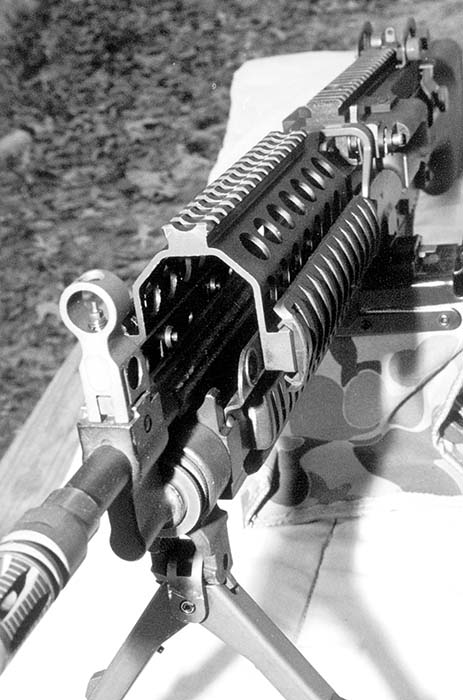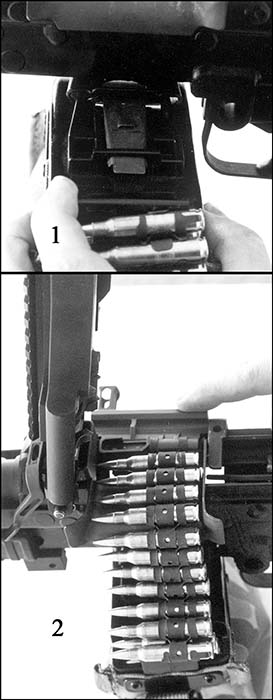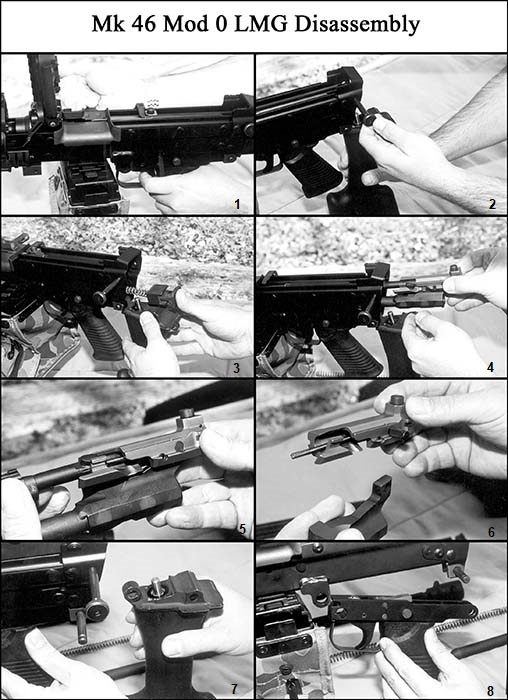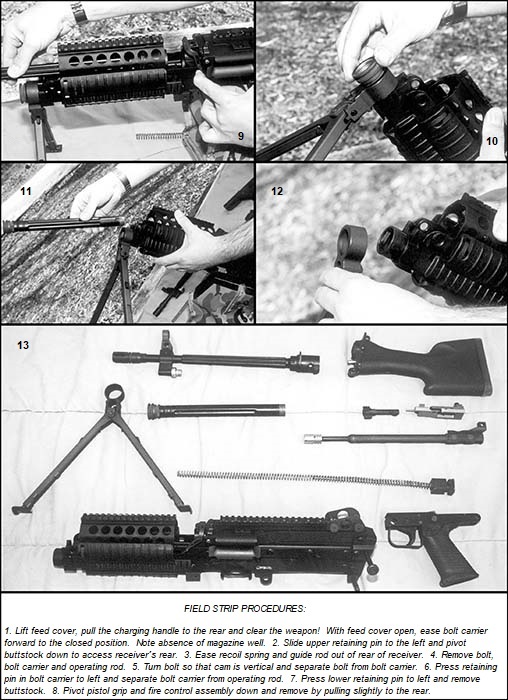By Charles Cutshaw
FN Herstal’s Minimi light machine gun has been in production since the early 1980’s and has been adopted by several nations as their standard light machine gun. The United States Army and Marine Corps have employed the Minimi since 1982 as the M249 Squad Automatic Weapon (SAW). A new version of the Minimi was recently adopted by the US Navy for special operations use. The new light machine gun has been designated the Mark 46 Mod 0 Light Machine Gun.
The Mk 46 Mod 0 shares approximately 70 per cent of its components with the M249, but is a very different weapon for different purposes. The Navy special operations forces will use the Mk 46 Mod 0 in close quarters battle (CQB) situations and at ranges out to 300 meters for fire suppression. The Navy users saw no need for an alternate magazine feed and this feature was therefore eliminated. There is no provision for manually removing the Mk 46 Mod 0 barrel for a quick change. If barrel replacement is necessary in combat, the hot barrel will simply be dropped from the weapon and replaced. The special operations gunner will typically carry 600 rounds for the Mk 46 Mod 0, all of which can be fired in less than two minutes without barrel replacement. Feed is from standard 200 round belts. Because the Mk 46 Mod 0 is required to be capable of firing 1,000 rounds without lubrication, the weapon is Teflon coated and the bolt and its carrier electroless nickel coated for reliability and corrosion resistance.

Although the Mk 46 Mod 0 superficially resembles FN’s Para and SPW Models, it is again different from these Minimi versions. The modifications to the Mk 46 Mod 0 reduced its weight by 3.9 lbs in comparison to a standard M249. The major differences between the Mk 46 Mod 0 and the standard M249 are as follows:
Step 1: Slide fresh ammo box into retaining mechanism from left to right until it locks in place. Step 2: Lay belt onto feed tray and close feed cover.
- The Mk 46 Mod 0 barrel is much shorter than that of the M249.
- The Mk 46 Mod 0 lacks the magazine feed of the M249.
- There is no provision for vehicle or tripod mounting.
- The gas regulation system has been eliminated and replaced with a simplified “monobloc” system.
- There are MIL-STD-1913 rails atop the receiver and a rail system is fitted to the handguard for mounting accessories.
- The Mk 46 Mod 0 flash suppressor is identical to that of the M4 SOPMOD Carbine. This flash suppressor accepts standard military issue noise suppressors (silencers).
- The carrying handle has been eliminated.
- The Mk 46 Mod 0 is Teflon coated for corrosion resistance and to provide dry lubrication.
- The rear sling attachment point has been moved forward to facilitate “across the chest” carry.
We visited FN Manufacturing in Columbia, South Carolina to test fire the Mk46 and were very favorably impressed with the latest addition to the US military’s small arms inventory. Eliminating the requirement for magazine feed apparently significantly increased the reliability of the FN light machine gun. We did not experience a single stoppage while firing approximately 1,000 rounds of ammunition. Changing belts was as simple as sliding a new container into place and positioning the new belt in the feed tray. As mentioned, there is no provision to manually remove the barrels; they will simply be dropped under operational conditions.
Firing the Mk 46 was uneventful and thus quite enjoyable, although muzzle blast was pronounced, as can be expected from any short barreled weapon. Since the Mk 46 is equipped to accept the Navy’s standard suppressor, (From Knight’s Armament Company), however, this probably will not be an operational problem, as the gun will almost certainly be deployed with suppressor in place. The Mk 46 was easy to control; bursts were easily kept in the five to seven round range and muzzle rise was minimal. Although fieldstripping is somewhat lengthy in terms of the number of steps involved, the task is actually quite simple in practice.
In sum, our time spent with the new Mark 46 version of FN’s MINIMI was a very pleasant experience. The gun was lightweight, simple and easy to use and absolutely reliable during our brief experience with it. It seems that the U.S. Navy has a winner!
| This article first appeared in Small Arms Review V4N10 (July 2001) |














